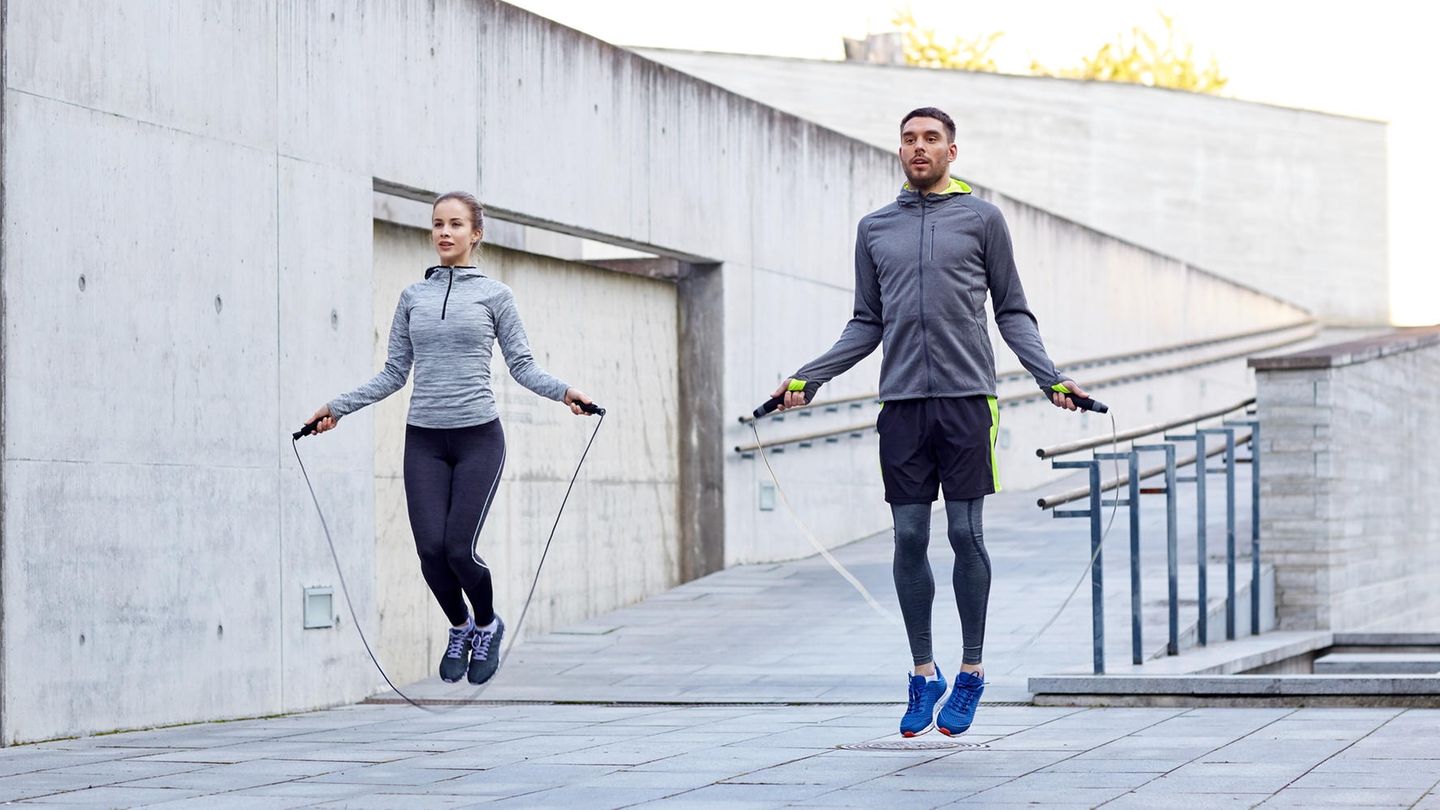Jumping
Why the workout is more efficient for inside and outside than jogging
Jumping rope has grown up. Rope-Kipping has developed into a fitness trend from school fun for teenagers. Here you will find purchase and training tips for beginners.
When I think back to my childhood and to what we spent the big break in the school yard at the time, I was the first rubber wist, cheese box and jumping rope. That was a few years ago and I can’t remember the last time I had a jump rope in my hand. I am currently watching bouncing women, men and children. On playgrounds, but also in the open air fitness areas, which are now available in many cities in Germany. Jumping rope has developed into a fitness trend in recent years. Longly only martial artists use the practical sports equipment for their warm-up and as a cardio workout.
You can find out why a time -saving and at the same time is efficient and healthy alternative to jogging and what beginners should pay attention to during training with a jump rope.
Jumping rope for beginners: This is important
Jumping rope is one thing above all: uncomplicated. The sports equipment itself, a few ordinary leisure shoes, some space and a small pinch of coordination. The fitness set-up for beginners is ready. Only newcomers to rope jump should be wondering what you should pay attention to when buying a jump rope. Well, basically you can’t go wrong. As a rule, the handles of jumping ropes via ball bearings are connected to the rope. This has the advantage that you no longer have to work with the whole arm, but only with your wrist to make the rope vibrate. Good ropes can also be adjusted over a small screw in length, so that the whole family can try out rope jumping. The jump rope itself consists of steel cables or nylon covered with plastic. Some models are available in different thicknesses. Beginners should first resort to ropes from PVC. Leather and wire ropes belong more into the hands of advanced rope skipper. With ropes whose length is not adjustable, the handles should reach under the armpits if you stand in the middle of the tight rope. Otherwise the rule applies: the shorter the rope, the more demanding the training. Here is a available.
3 Plus 1: What you should pay attention to when buying
What is actually being trained when jumping rope?
First of all: jumping rope is a full body training. It is not only the thigh and calf muscles that could be used as one could initially assume. The fuselage, more precisely the trunk stability, as well as chest and arms benefit from regular rope skipping. However, the muscle building is in second place when jumping rope. Rather, it is about improving the basic endurance. If you train properly and regularly, you can even do something for your weight. Because jumping not only brings variety to cardio training. When working with the rope, some calories are also burned. Especially for jogging muffle and good weather runners, Rope Skipping could be an interesting alternative for conditioning training in the park. It works inside and outside, it costs hardly any space and significantly less time. A small portion of coordinative talent is required for this. In short: when jumping rope, not only conditional, but also coordinative skills are required. There is one here .
Springs rope jumping: training tips for beginners
Instead of the permanent method, the most common training variant when jogging, the potential of jumping rope is in interval training. Important: no cold start! To prevent injuries and prepare the body for the following load, you should plan a 10-minute warm-up. Loose jogging with light arm circles gets the circulation going.
Beginners should start with 60-second intervals. Specifically means that a minute jump at a moderate pace, then a minute break. Depending on the fitness status, the whole thing five to ten times. Anyone who can do this for two to three days a week increases to a practice time of two minutes with a break of 60 to 90 seconds. For the beginning, simple jumping on the forefoot should get the heart rate going sufficiently.
Alternative interval training (2-3 times a week)
- 4 x 60 seconds with a 30 second break each
- After each set two minutes break
- Repeat the process four times
Even if you feel underwhelmed at first: don’t overdo it and keep the breaks. Your body needs this time to provide enough energy for the next interval.
Conclusion: Jumping rope is significantly more than jumping around the schoolyard a bit out of joke and tolerance. Correctly executed, it combines fitness with coordination in an ideally and is one of the most efficient and at the same time cheapest fitness workouts.
*This article contains so-called affiliate links to products in online shops. If a user clicks on it and buys something, the publisher receives a commission from the dealer, not from the manufacturer. Of course, where and when you buy a product is up to you.
Source: Stern
I am Pierce Boyd, a driven and ambitious professional working in the news industry. I have been writing for 24 Hours Worlds for over five years, specializing in sports section coverage. During my tenure at the publication, I have built an impressive portfolio of articles that has earned me a reputation as an experienced journalist and content creator.




